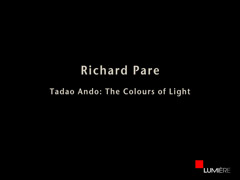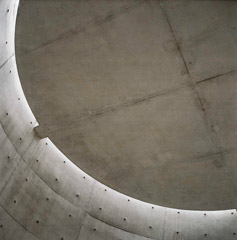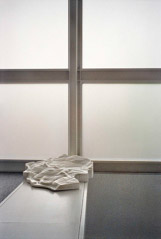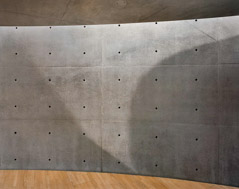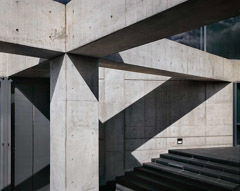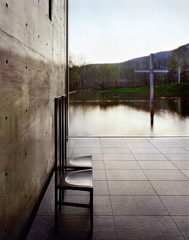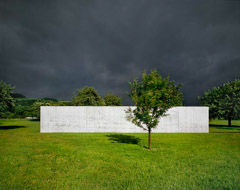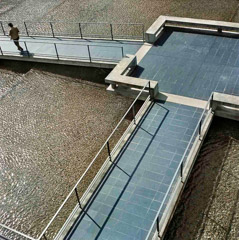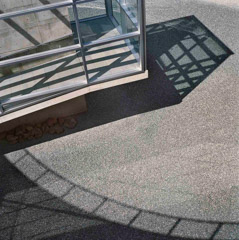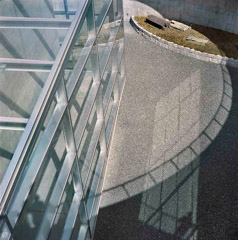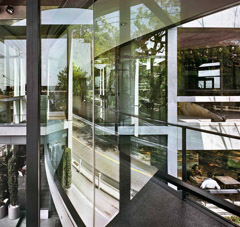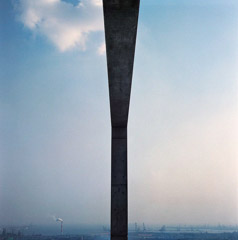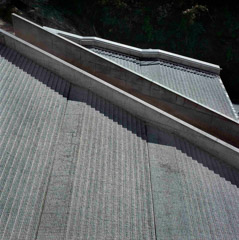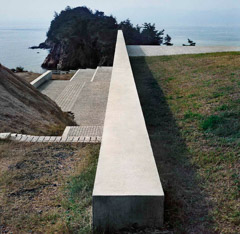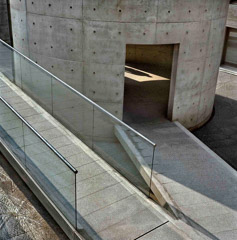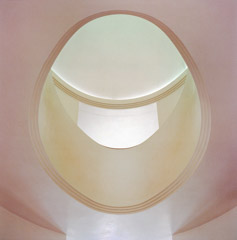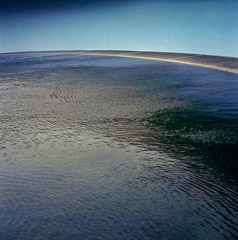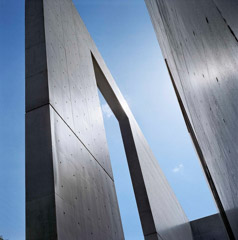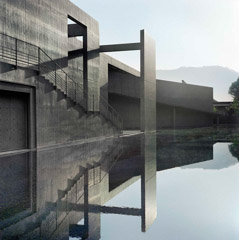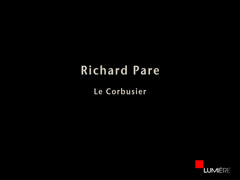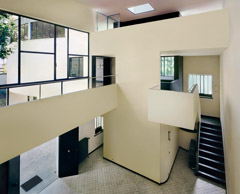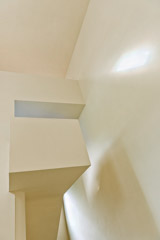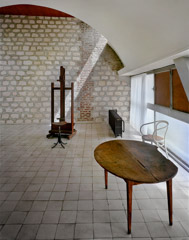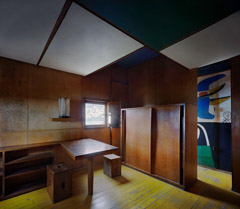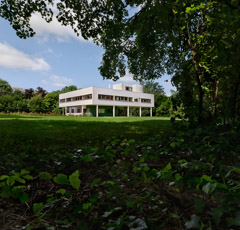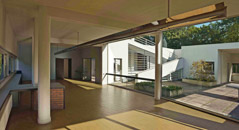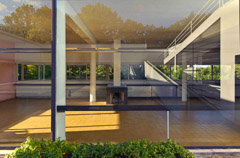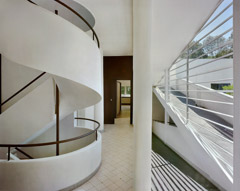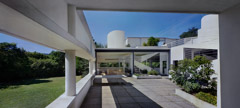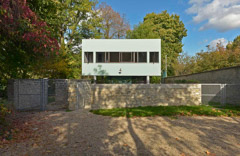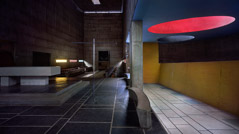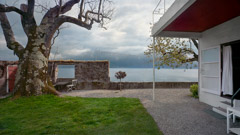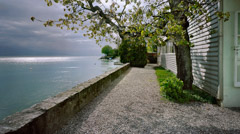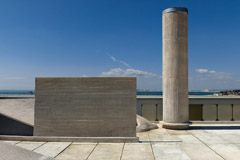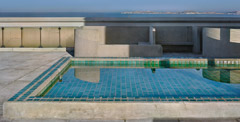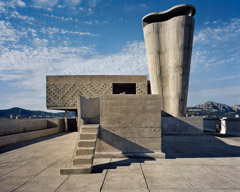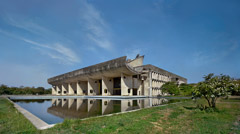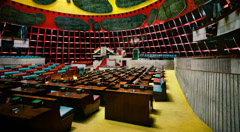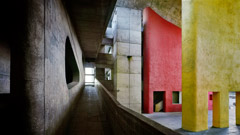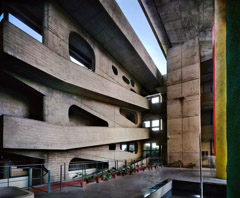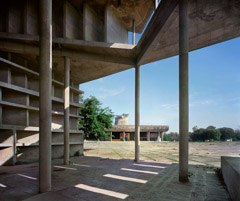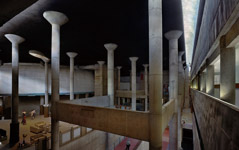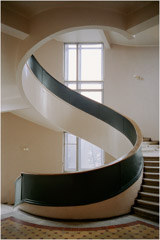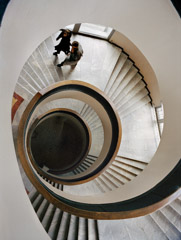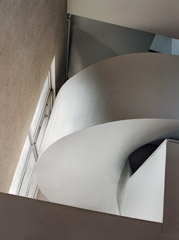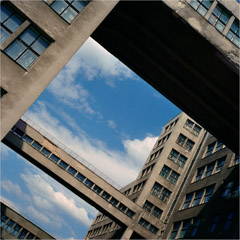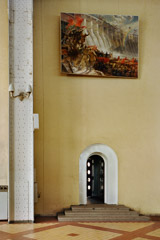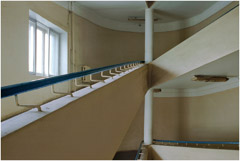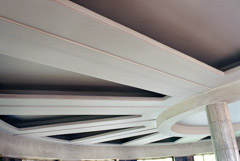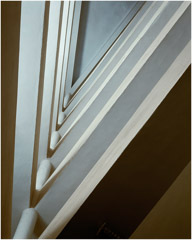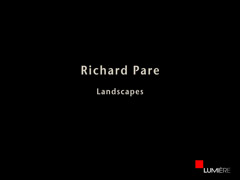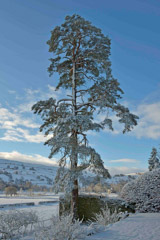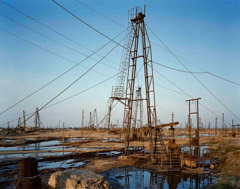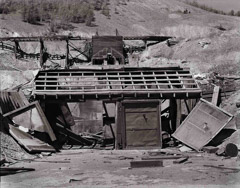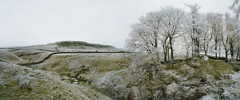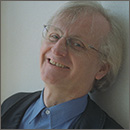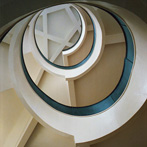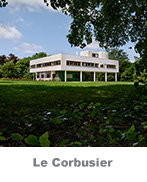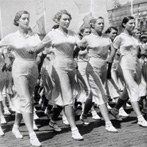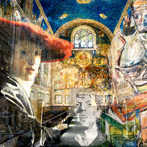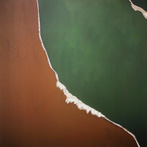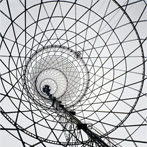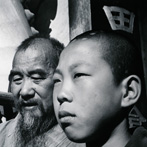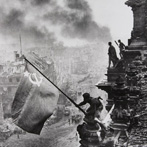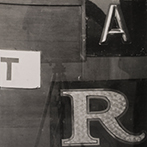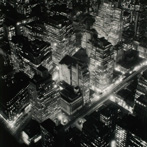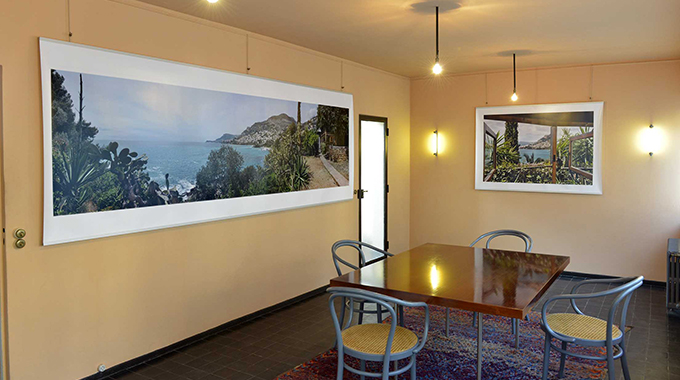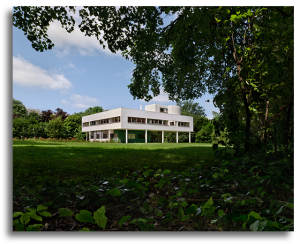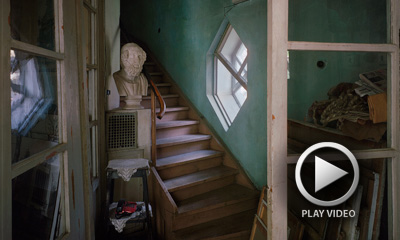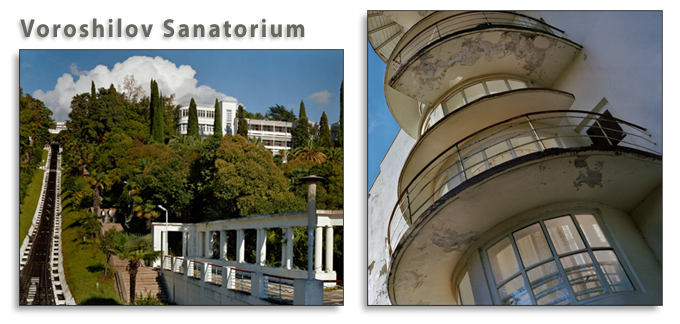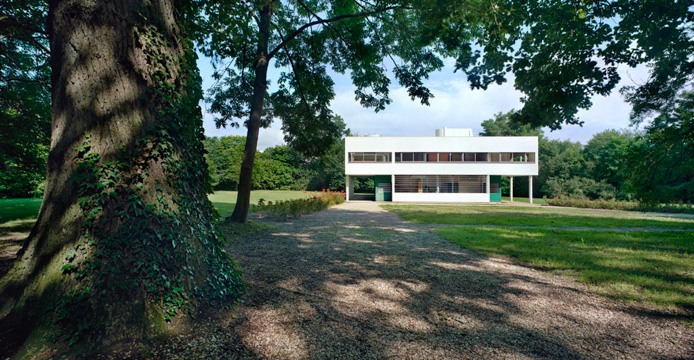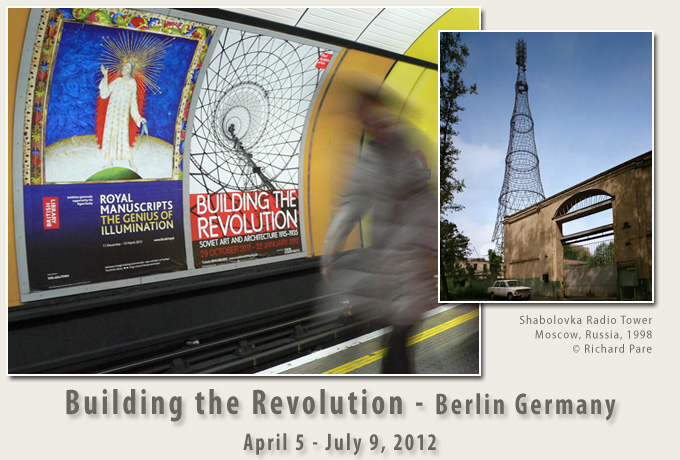Richard Pare
Richard Pare was born in England in 1948. In his early years he was a chorister at Canterbury Cathedral. Later he studied photography and graphic design in Winchester and at Ravensbourne College of Art before moving to the United States in 1971. In 1973 he graduated from the School of the Art Institute of Chicago and since then he has been working as a photographer with a particular affinity for architecture. His most recent project is an ongoing study of the architecture of the Russian Avantgarde. In 1996 he published Tadao Ando. The Colours of Light which received the AIA monograph award. He was curator of the Seagram photography collection from 1974 until 1985. He was the founding curator for the photography collection of the Canadian Centre for Architecture from its inception in 1974 until he became a consultant to the collection in 1989 , a role he continues to fulfill. His works have been exhibited widely and he is represented in many of the major public collections of photography. He continues to write and lecture on the history of photography. His numerous seminal exhibitions and publications include Court House: A Photographic Document (1978) Photography and Architecture: 1839-1939 (1982), and The Lost Vanguard, Architecture of the Russian Avantgarde 1922-1932.
![]()
The work of Richard Pare is featured in these exhibitions.
(Select the image to view the exhibition page)
The work of Richard Pare is featured in these Theme Collections.
(Select the image to view the theme page)
Carter Presidential Library and Museum
The lecture discussed the work of modernist architects in the Soviet Union during the years following the 1917 revolution and subsequent civil war. In little more than a decade some of the most radical buildings of the twentieth century were completed by a small group of architects who developed a new architectural language in support of new social goals of communal life.
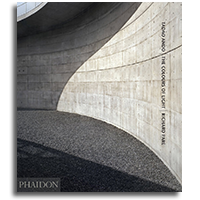
Tadao Ando: The Colours of Light Volume 1 (2nd Edition)
Published 2018
Publisher: Phaidon Press
ISBN-13: 978-0714875149
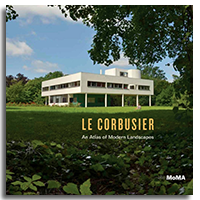
Le Corbusier: An Atlas of Modern Landscapes
Published 2013
Publisher: The Museum of Modern Art NY
ISBN-13: 978-0870708510

The Lost Vanguard, Russian Modernist Architecture 1922-1932
Published 2007
Publisher: The Monacelli Press, Inc.
ISBN 978-1-58093-185.4
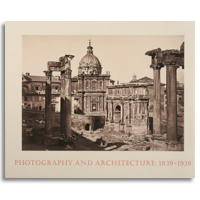
Photography and Architecture: 1839-1939
Published 1982
Publisher: Canadian Center For Architecture
ISBN 0-935112-06-5
Richard Pare: At Maison La Roche (Paris France)
In Conjunction with Le Corbusier Foundation
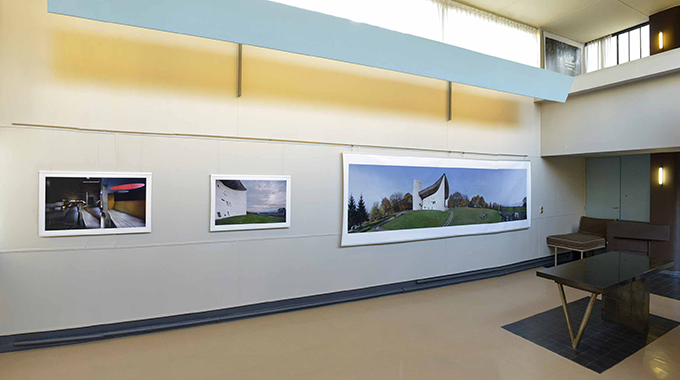
In addition to Richard’s work currently on view at Lumière in Epic Design . . . Ando & Le Corbusier, it is also on view in Paris France. Above and below are images of the installation in Maison La Roche. Additional information on the French exhibition can be found on the Le Corbusier Foundations Website, and in a post by the French on-line magazine, Eye On Photography (L’Œil de la Photographie).
Epic Design . . . Ando & Le Corbusier, has been extended until January 25, 2019
Corbusier Architecture - Receives UNESCO World Heritage Designation
The UN’s cultural organization UNESCO, has designated seventeen works, by pioneering Franco-Swiss architect Le Corbusier as world heritage sites. The locations are spread across the globe in seven different countries. READ ENTIRE ARTICLE
Shukhov Radio Tower to be Protected
UPDATED August 18, 2014 – Moscow Times
In March, Richard Pare along with Jean-Louis Cohen drafted a petition to Vladimir Putin calling for preservation of the tower. They were able to get an impressive list of Pritzker Prize recipients to join the effort.
Reported 8/18/14 via Moscow Times. Moscow City Hall has formally prohibited the moving or reassembly of a Soviet architectural landmark that has been under threat of demolition.
The article concludes with a note of the tower’s status: City Hall’s order proposes including the tower on the federal list of protected heritage sites. Restoration work will be carried out on the tower with the new rules in mind, though no time frame has yet been determined, Izvestia reported Monday.
Below is an audio clip of Pare discussing the history, symbolism and significance of the tower. Additional information on the tower and protest efforts can be found at the Shukhov Tower Foundation.
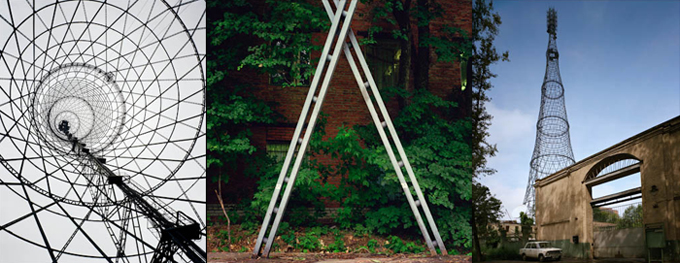
Richard Pare comments on the Shabolovka Radio Tower
View earlier posts (April 2014) when demolition of the Shukhov Tower seemed likely.
Architect's Granddaughter Evicted From Moscow's Iconic Melnikov House
August 14, 2014 – Moscow Times
The Moscow Times reports that: Moscow’s iconic Melnikov House has found itself embroiled in yet another property scandal following the forced eviction of the architect’s 75-year-old granddaughter.
The link above will take you to the article which provides details on the ongoing struggle by Melnikov’s descendants to preserve this remarkable structure for future generations.
Richard Pare photographed this iconic structure for the Lost Vanguard. The video clip to the right provides commentary and his thoughts on this famous building. (recorded 2009)
4:06 – video length
Richard Pare’s artist page
View 3-D renderings of the exterior and interior of the Melnikov House.
Sochi Russia - Richard Pare
With the recent world spot light on Sochi Russia, it is worth mentioning Richard Pare’s photographs of the Voroshilov Sanatorium, built 1930-34 by the architect Miron Merzhanov. Many of you may have seen recent coverage of a later work by Merzhanov; Josef Stalin’s dacha. The brutal dictators residence, received significant media coverage during the Winter Olympics. (NPR & New York Times)
Below is a written excerpt and images from Pare’s book The Lost Vanguard (Russian Modernist Architecture 1922-1932) describing the structure that brought Merzhanov the prominence that caught Stalin’s attention.
Taking advantage of a spectacular hilltop site on the coast of the Black Sea at Sochi, the Voroshilov sanatorium is one of the most innovative and well executed of all the modernist works of the Soviet era. Still in good condition and little altered, the complex exudes a sense of well-being and airy transparency. Most of the guest rooms face the ocean and are provided with balconies protected by brises soleils. The main complex is connected to the ocean by a funicular railway. From 1933-41 Merzhanov became Stalin’s personal architect, perhaps a contributing factor in the exceptionally well-maintained state of the complex. – Richard Pare
To view the entire on-line exhibition: The Lost Vanguard
To view Richard Pare’s Artist Page
Richard Pare - Corbusier, in Barcelona Spain
The work of Richard Pare will be opening on January 25, 2014 at CaixaForum in Barcelona, Spain. Richard’s photographs are an essential part of the Museum of Modern Art exhibition: Le Corbusier: An Atlas of Modern Landscapes. The MoMA exhibition was on view in New York during the summer of 2013. The Barcelona exhibition will run until May 11, 2014, it will move to CaixaForum in Madrid Spain, from June 10 – October 9, 2014. More details can be found on the MoMA website.
More information on Richard’s work can be found on his Lumiere Artist Page, and the exhibition: Le Corbusier, as well as being featured in the THEME collection: Architecture.

Richard Pare - Recent Interview
Q&A: In photographing the work of master architect Le Corbusier,
Richard Pare breaks the mold.
October 29, 2013
By David Hamilton
Architectural photographer Richard Pare has made his mark translating the spirit of spatial experience into the confines of two dimensions. Perhaps best known for his extensive photographs of Soviet modernist architecture, Pare turned his attention to the architecture of Swiss modernist master Le Corbusier at the behest of the Museum of Modern Art for its recent exhibition “Le Corbusier: An Atlas of Modern Landscapes” and the eponymous publication. Organized by architectural historian Jean-Louis Cohen, the exhibition and Pare’s photographs approach Le Corbusier’s buildings in a new way, presenting them not as objects but as figures in the landscape, a perspective that is bound to alter the way one thinks about his work. To read the interview please follow this link to the ArtsATL web page.
Richard Pare at Martin Gropius Bau in Berlin Germany
Building the Revolution: Soviet Art and Architecture 1915-1935
April — July 2012
Martin Gropius Bau, Berlin Germany
Richard Pare’s photography from The Lost Vanguard (exhibited at Lumière in April of 2009), was on view at Martin Gropius Bau, in Berlin Germany, April 5 – July 9, 2012. For more specific information on this past exhibition, SELECT HERE.
The exhibition, Building The Revolution, came to Berlin directly from London’s Royal Academy of Art where it received numerous positive reviews; The Guardian, Financial Times, Wall Street Journal, London Review of Books, Evening Standard, Oxford Times, London Confidential, to name just a few, (Oct 2011 – Jan 2012).
This exhibition explored one of the most exceptional periods in the history of architecture, from the years just prior to the October Revolution until the foundation of the U.S.S.R. First shown in 2007 at The Museum of Modern Art (NY), this work is an important contribution to the history of both photography and architecture. The flamboyant age of Russian modernity, in the 15 years following the October 1917 Revolution, was hardly recognized before it came to an abrupt end. After the fall of the communist experiment in 1991, structures employing modernist era design and construction methods were rapidly disappearing. In a short period of time nearly a quarter of the buildings that were to have been protected were razed or disfigured. Richard Pare, a master photographer and curator of architectural photography, developed this body of work to record these interior and exterior designs before they succumbed to redevelopment.
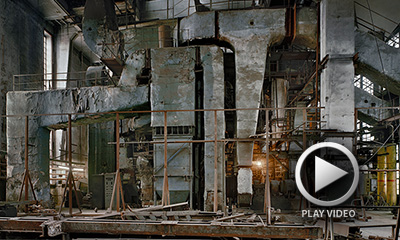
“Richard Pare’s (work) opens windows onto the substantially unknown architectural manifestations of a period characterized by unprecedented artistic, social and cultural flights of imagination.” – Phyllis Lambert, Founding Director, Canadian Centre for Architecture
A promotional video for the exhibition, (please note: audio is in German).
2:34 – video length
Richard Pare’s artist page
Richard Pare Comments on the Melnikov House
Richard Pare - Exhibition: Royal Academy of Arts
Building the Revolution: Soviet Art and Architecture 1915-1935
October 2011 – January 2012
London’s, Royal Academy of Arts – Sackler Wing of Galleries
Richard Pare’s work from The Lost Vanguard was previously on view at the Royal Academy of Arts. For more specific information on this past exhibition, SELECT HERE, a review from The Guardian can be SEEN HERE, (links open new windows).
THE LOST VANGUARD – This exhibition explored one of the most exceptional periods in the history of architecture, from the years just prior to the October Revolution until the foundation of the U.S.S.R. First shown in 2007 at The Museum of Modern Art (NY), this work is an important contribution to the history of both photography and architecture. The flamboyant age of Russian modernity, in the 15 years following the October 1917 Revolution, was hardly recognized before it came to an abrupt end. After the fall of the communist experiment in 1991, structures employing modernist era design and construction methods were rapidly disappearing. In a short period of time nearly a quarter of the buildings that were to have been protected were razed or disfigured. Richard Pare, a master photographer and curator of architectural photography, developed this body of work to record these interior and exterior designs before they succumbed to redevelopment.
“Richard Pare’s (work) opens windows onto the substantially unknown architectural manifestations of a period characterized by unprecedented artistic, social and cultural flights of imagination.” – Phyllis Lambert, Founding Director, Canadian Centre for Architecture
Le Corbusier…Architect of Modernism
The presentation included images from Pare’s Le Corbusier portfolio that was on view this past summer at the Museum of Modern Art – New York exhibition… Le Corbusier: An Atlas of Modern Landscapes. The portfolio was made possible by a grant from the AVC foundation, Moscow, and was first presented at the Pushkin Museum, Le Corbusier: Creation and Secrets, from Painting to Architecture. It will also be featured at Fodacion La Caixa in Barcelona and Madrid (2014).
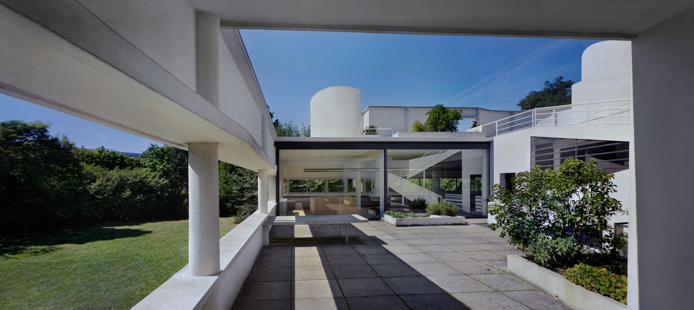 Villa Savoye, Poissy, 1929-30, (2012) © Richard Pare
Villa Savoye, Poissy, 1929-30, (2012) © Richard Pare
CL, Photographer Contemplates a "Lost Vanguard"
Below is an excerpt of a review from the Creative Loafing.
To read the entire review please access the the Creative Loafing web site.
DATE: April 16, 2009
PUBLICATION: Creative Loafing
BYLINE: Jeremy Abernathy
TITLE: Photographer Contemplates a Lost Vanguard at Lumière
EXHIBITION : “Richard Pare – The Lost Vanguard”
Richard Pare became enamored with modernism at an early age. The son of an artist and teacher, Pare studied graphic design and photography in the U.K. before earning his MFA at the Art Institute of Chicago. During his 15 years at the Canadian Centre for Architecture, he amassed a sizable collection of architectural photography and, in the process, solidified artist contacts in Russia starting in the mid-’90s. Pare’s research on Russian modernism, architecture, and his photographs during numerous field trips abroad are the subject of his book, Lost Vanguard: Soviet Modernist Architecture, 1922-1932, as well as his newest photo exhibition at Lumière Gallery in Peachtree Hills. The opening reception is tonight, April 16 from 6:30-8:30 p.m.
In his interview with World Socialist Web, Pare describes the process by which many buildings were constructed in Russia during the early 20th century: During fallow periods, in winter and the time between seedtime and harvest, peasants went into the cities to do construction work in what was an ongoing tradition long before the revolution. Contemporary photographs show scaffolding made up of great baulks of timber that is so cumbersome, and yet it is quite beautiful. What they did with such primitive means is amazing.
As techniques became more sophisticated, Russian architecture achieved a surprising variety and grace to rival the West. The photo above, which resembles Frank Lloyd Wright’s famous layout for the Guggenheim Museum, was actually “a communal house for officers of the Cheka (secret police), built as the result of a closed competition.” Viewed from above, the plan as a whole describes a hammer and sickle, extended “by a star motif in the reinforced concrete beams at the head of the staircase of the communal block.”

